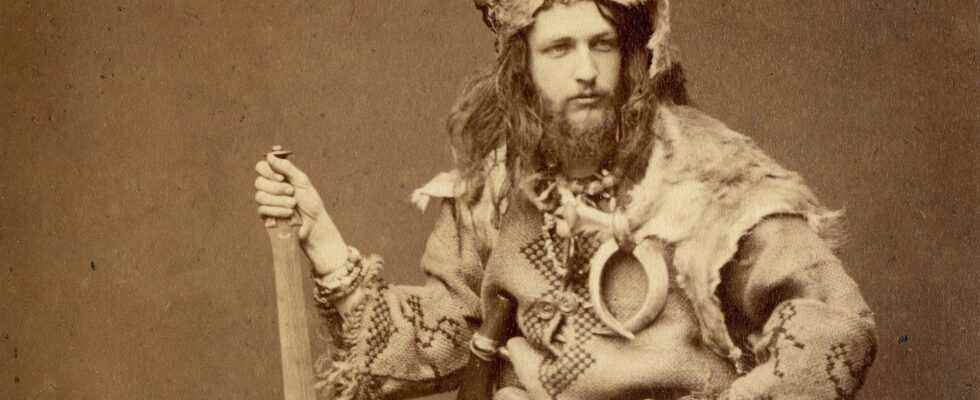“During the two decades that Luschan was in charge of the collections for Africa and Oceania at the Museum of Ethnology, he established the Berlin house as the central institution for the acquisition of ethnographic objects from the colonies,” says the anthropologist Maria Six-Hohenbalken from the Austrian Academy of the sciences. From 1889 the Berlin Museum of Ethnology even had an official right of first refusal to purchase “Ethnografica” and “Naturalia” from the colonies. From then on, “all scientific broadcasts from the German protected areas” were to be sent to the Berlin institution. By the time Luschan retired as director in 1910, the museum’s Africa collection had grown from around 3,500 in 1880 to over 50,000 catalog numbers.
“Punitive Expeditions” as a source for exhibits
He was well aware that the acquisition of cultural assets was usually brutal. “The Foreign Office sent us a very pompous collection, fetishes and other carvings of a completely new kind, originating from Captain von Kandt’s Ngolo punitive expedition,” he wrote, for example, in 1903, delighted. “Moreover, one of my current listeners, Lieutenant von Arnim, will be joining a new, major punitive expedition against the Ngolo (top secret!!). So we can look forward to some very brilliant things. The costs will probably be zero.« But how do the words of the enlightened researcher correspond to the actions of the unscrupulous buyer? Why did Felix von Luschan accept becoming the beneficiary and ultimately an accomplice of robberies through acquisition?
One answer to these questions is: rescue anthropology. Like many of his colleagues, Luschan assumed that the so-called primitive peoples were doomed and would fall victim to progress in the form of the industrialized colonial powers. The cultures of Africa were »heading for rapid decline, if only because the European influence with its four S (slave trade, liquor, syphilis, trashy goods) had an effect on them like a decomposing poison and in some cases still has an effect«, Luschan was convinced.
“These men were also concerned with wanting to have, wanting to own, wanting to show”(Maria Six-Hohenbalken, anthropologist)
His superior in Berlin, the anthropologist and museum director Adolf Bastian (1826–1905), was also of the opinion that the modern age would soon destroy all “ethnic originalities” “with steam power and the speed of electricity”. “The focus was on those non-European cultures that were perceived as without history, which were considered ‘primitive’ in evolutionary proximity to an earlier stage of humanity and were therefore understood as the key to reconstructing the history of human development,” writes the anthropologist Katarina Matiasek from the University of Vienna. But in view of the shocking diagnosis that the indigenous cultures will disappear, neither Bastian nor Luschan criticized colonialism, but attached even more importance to the urgency and importance of their own task. The anthropologists would have to collect evidence of these cultures and put them in the European “rescue facilities,” as Bastian used to call museums.
German museums’ craze for collecting and striving for prestige
However, rescue anthropology was only one aspect of the general mania for collecting, with which the anthropological and ethnographic museums of the industrialized world were expanding. The efforts of its directors and employees to raise their own house to the level of renowned institutions such as the Louvre or the British Museum or even to surpass them represented a drive that should not be underestimated. »These men were also concerned with wanting to have something , to want to own, to want to show«, says the anthropologist Six-Hohenbalken.
The big houses in Paris and London had also filled many of their stocks with all sorts of stolen goods from all over the world. German museum directors followed suit. Felix von Luschan, who was born in Hollabrunn near Vienna in 1854, attracted attention as a particularly keen collector. “Since his childhood, Luschan had privately collected anthropological collections such as archaeological finds, skeletons, preparations, photographs and scientific offprints,” explains Matiasek.
